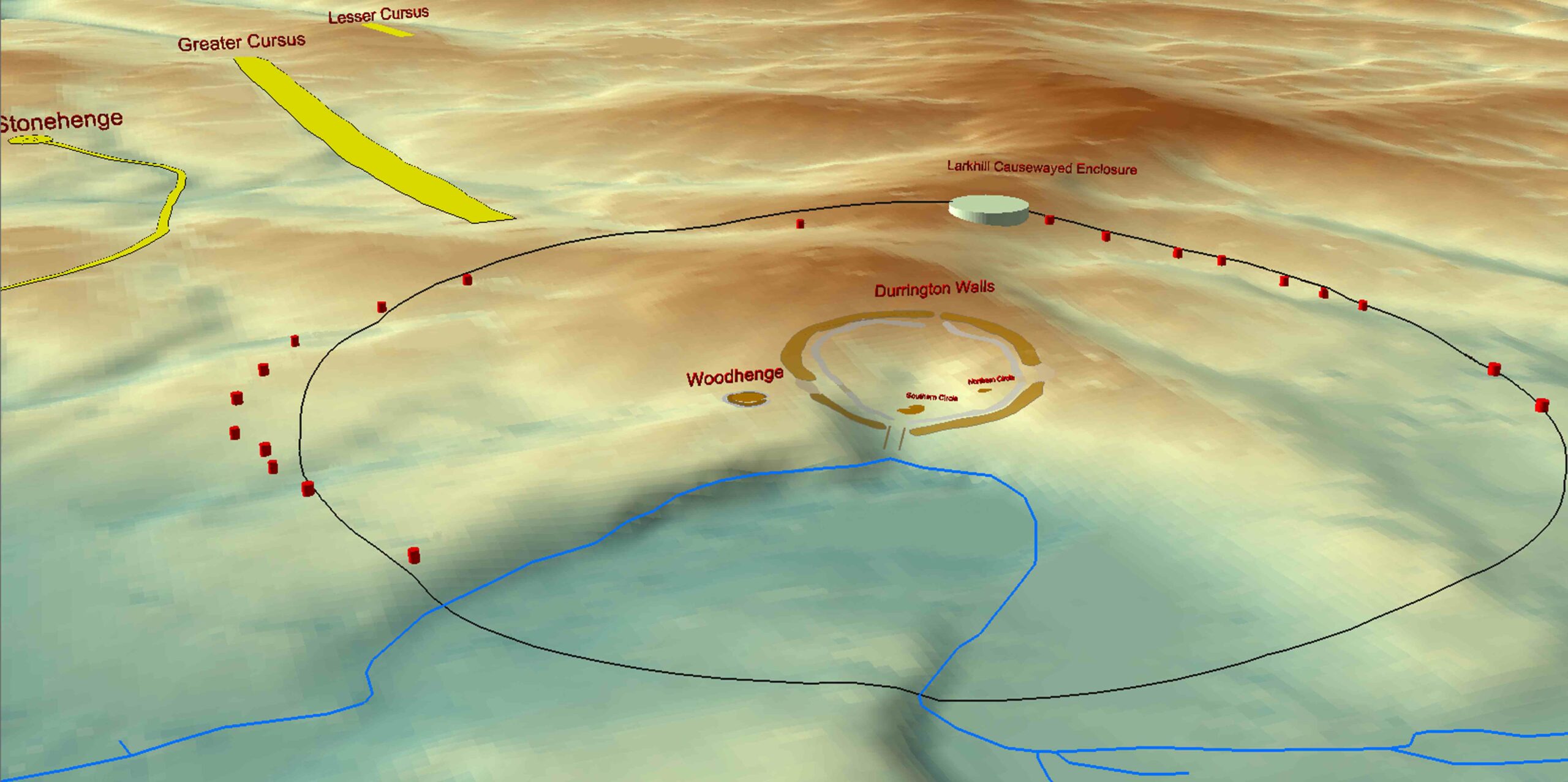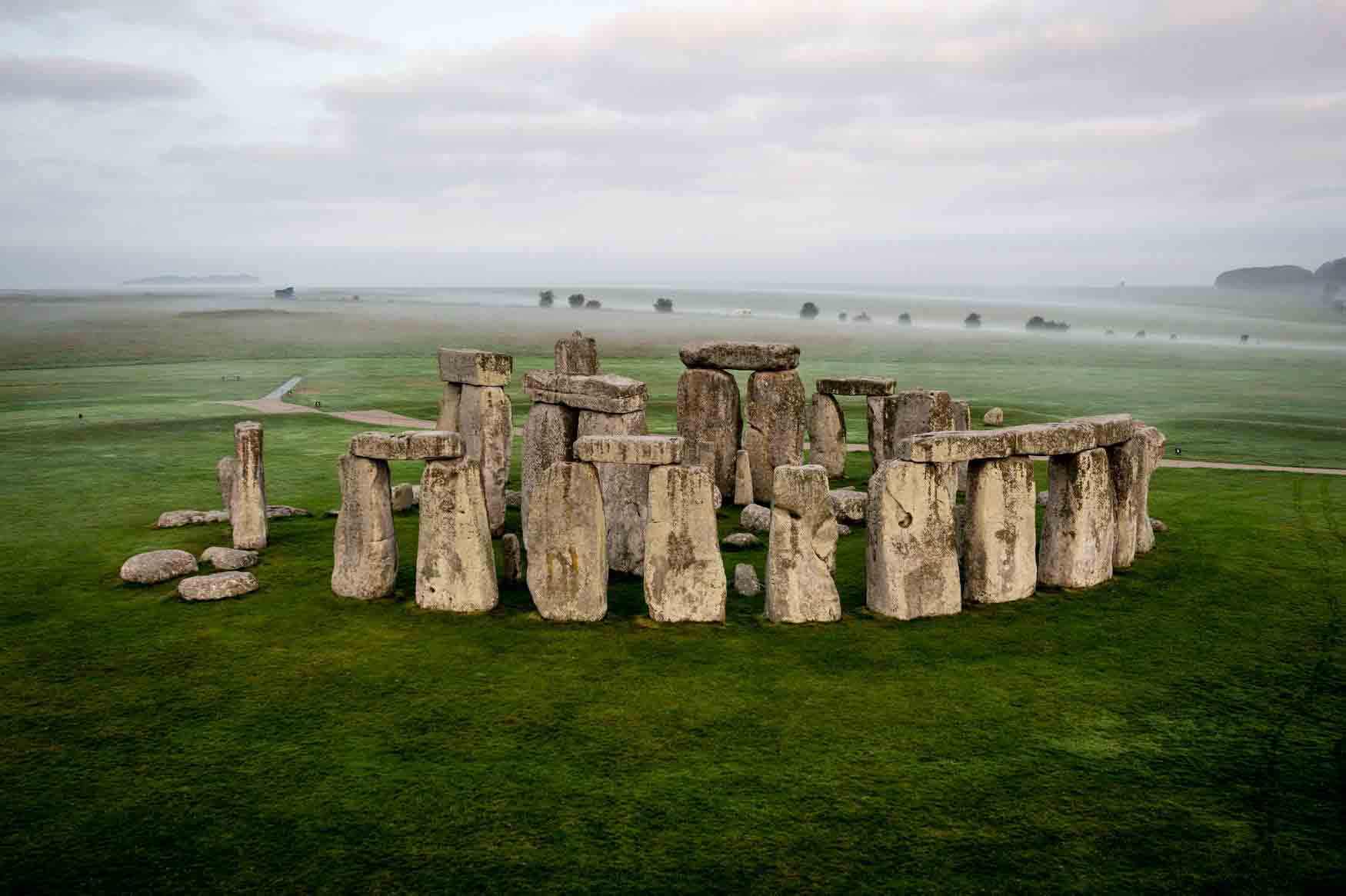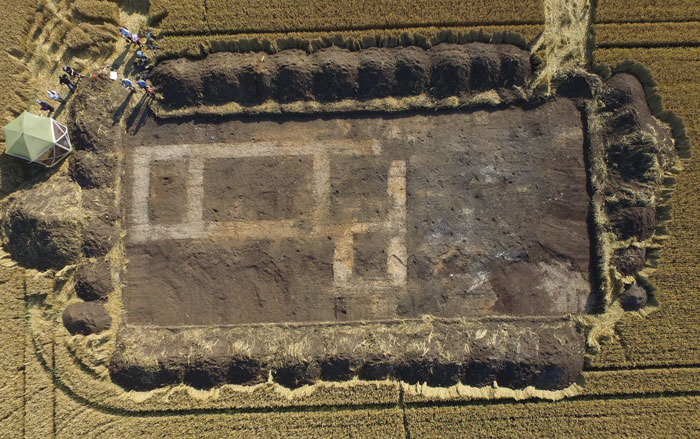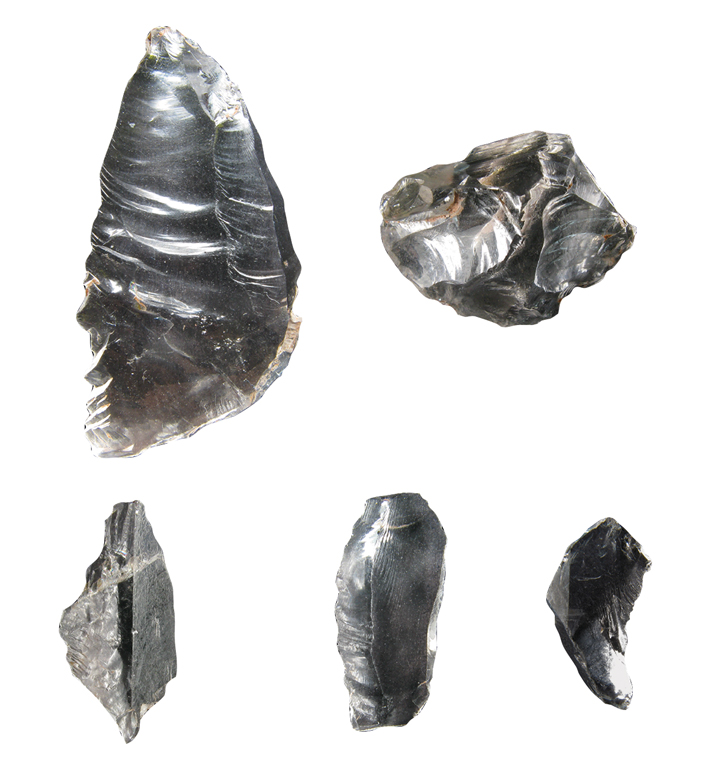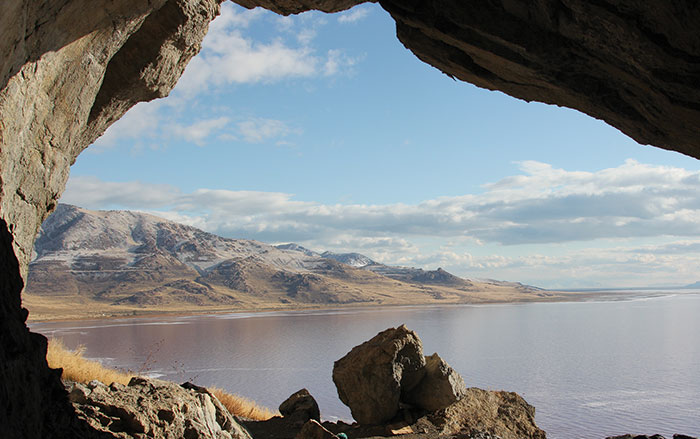
Using remote sensing, archaeologists have identified a series of massive Neolithic pits two miles northeast of Stonehenge that were once part of Britain’s largest sacred prehistoric complex. “Stonehenge has been studied by archaeologists and antiquaries for several hundred years,” says University of Bradford archaeologist Vincent Gaffney. “One might have expected nothing of this scale could be left to find.”
The team identified evidence for 20 huge shafts, each measuring around 33 feet in diameter and 16 feet deep when they were created 4,500 years ago. By plotting the shafts’ locations on a broader map of the region, the researchers realized that they formed a huge circle 1.2 miles in diameter around the site of Durrington Walls. The shafts may have originally demarcated the sacred henge site’s boundary, guiding pilgrims toward the ritual space or warning others not to enter it. “Identifying these pits has added enormously to our understanding of the Stonehenge landscape overall,” says Gaffney. “Durrington Walls was the largest of Britain’s henges, and this discovery adds not just to the size but to the complexity of the life story of that monument.”


